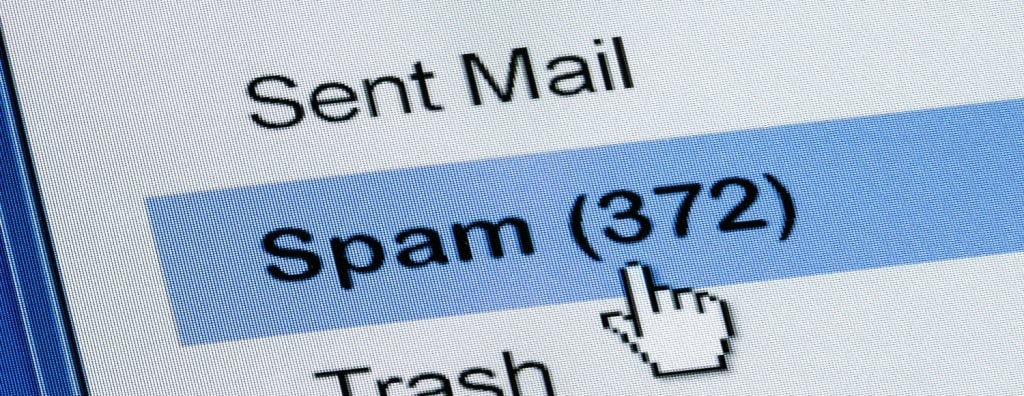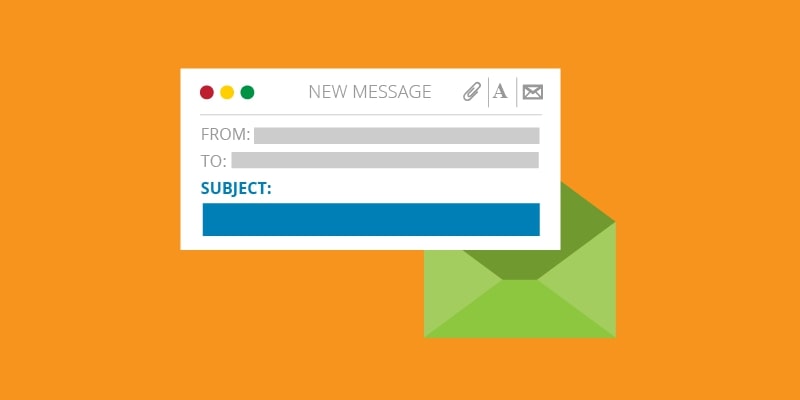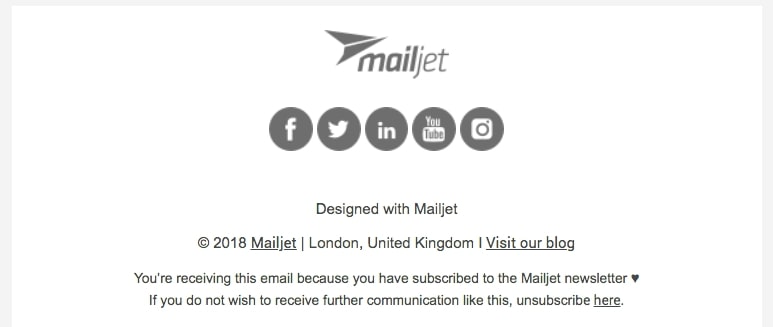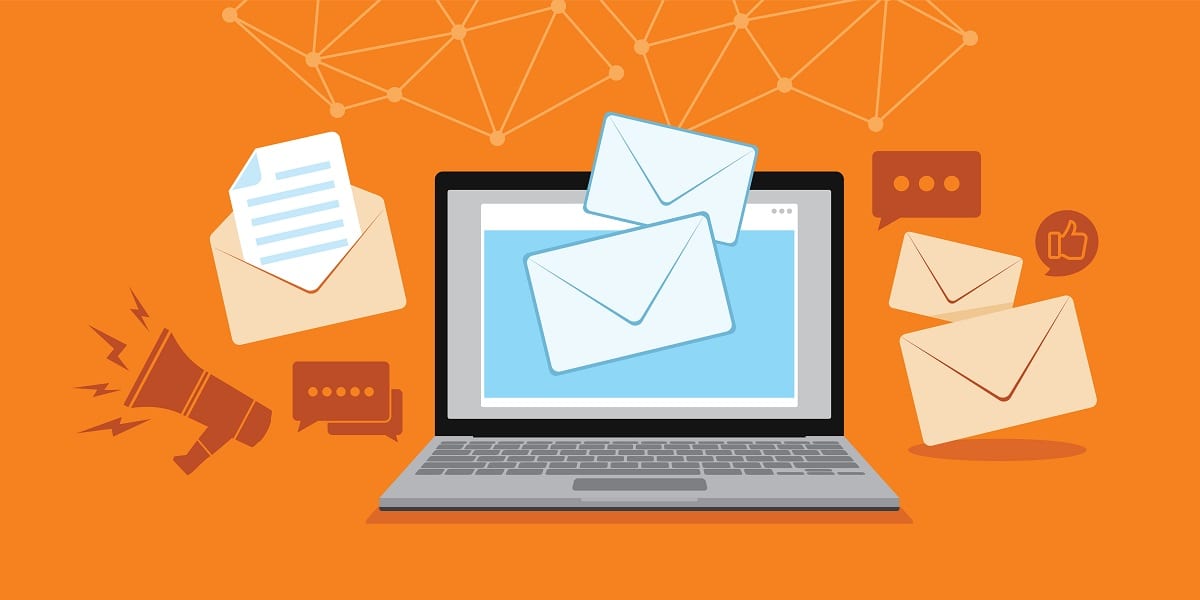Unlock The Reasons Why Your Emails Go To The Spam Box
It’s so frustrating to have spent hours writing the perfect email just to find out that very few people or no one actually reads it. The open rate is abysmal, and the click rate is far below your expectations. Even the strongest subject line is worthless when the email ends up in the spam folder of the recipient. Getting a huge list is pretty much pointless if your email subscribers can’t even see the email you sent. You could blame your email provider at this point: “This email service provider sucks! I’ll choose another ESP”.
Ok, it might be the right decision if the real issue that causes your emails to spam is your current ESP. But, ESP is not always the reason. There are other factors, other than ESP, that could prevent an email from reaching the inbox. If the problem isn’t with the ESP, going to another ESP doesn’t make a difference. In this article, I will explain to you eleven reasons why your emails end up in the spam box. Let’s jump right into the details.
What throws your email into the spam folder?

One of the biggest reasons that your emails go to spam is that email spam filtering has become more powerful. Webmail companies are simply cracking down on spam. However, the filters aren’t 100 percent reliable, so often legit emails go to spam too. But this is the tricky part:
Subscriber engagement plays a major role in the delivery of emails. That’s because webmail providers look at your level of engagement and the behavior of the recipient when deciding which emails to send to the inbox. I’m going to describe all these factors in-depth so you can avoid being flagged and stop your emails from going to spam.
Read more:
- How to using images on email marketing?
- Why should you clean your email list?
- 11 Welcome Email Templates That Always Win
11 Reasons why your emails end up in the spam box

There is a lot of stuff going on whether or not the emails are sent to the inbox. Let’s dive into reasons why your emails don’t get through the spam filters.
You Didn’t Get Permission to Email.
The # 1 rule for email marketing is to get email permission first. Never purchase a list of email addresses or risk breaching the CAN-SPAM Act and may be subject to fines of up to $16,000. To get permission, you will need an opt-in form on your website that makes it perfectly clear that your web visitors are opting into your email list.
Also, don’t manually add emails from business cards received at a conference to your email list. Although you might think they would appreciate your newsletter, sending emails to them breaches the CAN-SPAM Act because they did not grant you permission to do so.
You can (and should) still send emails to these valuable leads. Follow up with a separate campaign, personal email, or autoresponder series designed solely for those leads and ask them to opt into your newsletter.
You Didn’t Include Your Physical Address.
To obey the laws, you must provide your valid, physical address. This could be your actual street address, a mailbox that has been registered with the U.S. Postal Service, or a private mailbox registered with a commercial mail receiving agency established under Postal Service regulations. If you are a business and you work out of your house, you can probably get a P.O. Business box so you don’t have to provide your home address.
You Have Low Engagement Rates.

Top webmail providers have confirmed that they are looking at how many emails are opened and how many are removed without being opened as a main factor in their spam filtering decisions. Therefore, if you have low open rates or read rates, your emails run a higher risk of being flagged as spam. And, let’s just assume that everyone’s opening rates can be a little higher.
The overall opening rate for all sectors was 24 percent in 2018. To boost your open rates, send your emails at the right time, improve your subject lines, segment your email list, and keep your list fresh.
You Have Low Mailbox Usage.
The next reason is low mailbox use. In their spam filtering algorithms, mailbox providers examine the ratio of active to inactive email accounts in your list. An inactive email address is an address that has not been used for a long time or is barely used.
If you’re mailing a large number of addresses that appear to be abandoned, that’s a red flag for spam filters. To avoid this from happening, clean up your email list regularly of any subscribers who haven’t been involved in your campaigns for a while. Your email service provider may also provide a feature to automatically delete any emails from your list that look like abandoned addresses.
Your IP Address was Used for Spam.
Even if you never sent spam yourself, your emails could be flagged as spam if someone else used your IP address for spam. For instance, if you send your campaigns through an email marketing service, your email will be delivered through their servers. But if even another customer sends spam, it may also affect your delivery. Remember, however, that realibel email marketing services, such as Mailchimp, are diligent about keeping their reputations untouched and have very stringent protocols and regulations about places to avoid this kind of thing from happening.
Your Subject Line is Misleading.

According to the CAN-SPAM Act, it is against the law to intentionally mislead someone with your subject line in order to induce them to view the email. In a survey done by Litmus and Fluent, more than 50 percent of participants said they felt deceived into opening a promotional email by the subject line of that email.
Here are a few examples of misleading subject lines:
- “Have I left my jacket in your place?” This sort of subject line could be used as a trick to make it look like they know you.
- “RE: CURRENTLY IN OFFICE” is sneaky because it can be mistaken for an email response or a work-related email response.
- “Urgent – Please update your details.” If something says “urgent,” it’s best to be urgent.
- “Thank you for your order.” It’s a very bad form to use a transaction subject line if the email isn’t really transactional.
We know what you’re worried about. “Why would anybody do anything like this? These are some super shady tricks.” And you’re right. But there are still certain grey areas that you can avoid. Imagine, for example, that you’ve just written 8 tips to increase your Instagram engagement and want to share it with your subscribers to your email newsletter. In order to get them to open an email, a subject line like “8 Reasons You Should Never Post to Social Media.” may work well. But when they open your email fearing that something has changed radically in the social media marketing environment, you’re like, “Kidding, guys. But here are the 8 tips that I wanted to share with you.” Some of your subscribers may feel amused, but others may not be. Is this a risk worth taking?
Your Subscribers Don’t Remember You.
The second most popular reason emails never hit the inbox is spam complaints. In 2018, the average total complaint rate was 0.39 percent, almost double the recommended 0.2 per cent for mailbox providers. Any time a subscriber sends an email as spam, whether or not the email is actually spam, the complaint is registered by the mailbox provider. Once complaints exceed a certain threshold, all future campaigns will skip the inbox and be sent directly to the spam folder.
Then why would a subscriber mark your email as spam if it wasn’t spam? Yeah, the most possible explanation is that they really don’t remember you. Even if they’ve given you permission to contact them, they don’t remember doing it, so they assume you’re sending them spam.
To avoid this from happening, make sure the branding in your emails is unforgettable and suits the branding on your website. This includes some pictures, colors, typography, expression, etc. Also, make sure that the “from” line is a name they can remember. If your subscribers don’t remember you right away, you may get spam complaints, so keep that in mind. Also, make sure you include an easily accessible “unsubscribe” link so that they can opt out if they don’t want your emails anymore.
Your HTML Emails Don’t Follow Best Practices.
If you send text-only emails, you won’t have to worry about this. However, you might want to send HTML emails as well as a text-only version. That way, you can add some branding elements that make your emails more memorable. However, you need to follow some of the best practices for sending HTML emails so that they are not labeled as spam:
- Using up to a maximum width of 600-800 pixels. This is going to make your branding elements look good.
- Keep your HTML code as easy and clean as possible. If you use a template from a reliable email service provider, you’re good to go.
- Keep the image-to-text ratio minimal. Images are OK to use in your email marketing campaigns, you shouldn’t send text-only emails.
- Compressing your image. Don’t use ultra-high resolution images or other media with a large file size.
- Do not use obscure fonts. Select fonts that work across platforms, such as Arial, Verdana, Georgia or Times New Roman.
- Optimize for mobile devices. Make sure that your emails are readable and quickly uploaded on mobile devices, and that your links can be easily pressed with a thumb.
You Didn’t Include an “Unsubscribe” Link.

Without an unsubscribe link, your emails will be on their way right to the spam box. No matter how valuable you believe your email campaigns are, you still need a way out for your subscribers. If you don’t, you could get spam reports (at best) or you could get thousands of dollars in fines.
Include an unsubscribe link or similar opt-out feature at the bottom of your emails. Often, if anyone wants to be excluded, you need to process the request within 10 business days. You’re not allowed to charge a fee to remove them, ask for any information apart from their email address, or make them do anything except sending an email reply or directing them to a single page on your website.
For instance, you can’t get subscribers to fill out a form that explains why they opt out before they can unsubscribe. If you would like to survey your unsubscribers, you can show them the survey right after they have successfully unsubscribed or in the unsubscribe confirmation email, not before. Also, never sell or transfer your unsubscriber email addresses to another mailing list.
Your “From” Information is Inaccurate.
It is also against the CAN-SPAM ACT to deceive anyone with your “from,” “to,” “reply-to” and routing information. For instance, if you made your email look like it was from the President, it would be illegal. Yes, that’s an extreme example, but you’re getting the idea. As a best practice, make sure you have a name in the “from” area that your subscribers are likely to recognize, and do not change it too much. It may be the name of a person, the company name, or a combination of the two. No matter what you choose, aim for memorability and consistency.
You Used Spam Trigger Words.
Some spam filters are activated by certain words in the subject line or the body of the email. Here are some words that can be considered spam:
- amazing
- check or money order
- cancel at any time
- click here
- dear friend
- congratulations
- for only ($)
- free or toll-free
- Guarantee
- great offer
- increase sales
- promise you
- order now
- risk-free
- this is not spam
- special promotion
- winner
Your email provider might have an automated tool to review your spam trigger words email before sending it. You can also use ISnotSPAM, a free tool that scores your emails and see if they are likely to activate spam filters. What you need to do is send your email to the email address shown on the ISnotSPAM website, and then click the View Your Report button. The report will show you the parameters that they looked at, along with your ranking, and whether you passed or failed the examination. You can check out this larger list of spam trigger terms.
How to prevent your emails from being thrown into the spam folder?

Avoid spam trigger words and phishing phrases
When writing emails, always try to avoid phishing phrases and spam words. Unfortunately, there is no such thing as a full list of spam words to avoid, but here are some examples that might give you an idea:
- Sale
- Member
- Fantastic deal
- Act now! Don’t hesitate!
- For free
As spam is essentially trying to block commercial advertisements, terms that are very common in such emails must be avoided (or used carefully). Phishing, on the other hand, is designed to steal identities by allowing the receiver to click on a malicious link. So the common phrases in phishing emails that you should avoid using are related to personal data and bank accounts.
Ensure that you’re Compliant with the CAN-SPAM Act
If you’re sending a commercial email to your subscribers, you’re going to have to abide by the CAN-SPAM laws (or you’re going to be at risk of penalties that can be up to $16,000):
- Don’t use deceptive subject line
- Don’t use using misleading header information
- Provide the recipients know with your address
- Provide the option for your recipients to opt-out of receiving future emails
- Immediately process opt-out requests
- Clearly label your email as a promotional message
If you send only relationship information, such as a transactional email, then you will be excluded from these laws. But you do have to make sure you don’t use any inaccurate or misleading routing information.
Set up a Whitelist
Send your customers a personal email (without any ads or marketing links) and ask them to whitelist your domain. This action can ensure that your business email is not listed as spam.
Include a Text Only Version of your Email
If you send HTML emails, they can easily end up in the spam folder. A simple way to get around this is to use a text-only version of your email. Furthermore, this will also help if the receiver can’t read the HTML email.
If you need to send pictures, make sure you use a decent text-to-image ratio. Here are several tips to help your photos get around spam filters:
- Send a well-formed HTML email
- Don’t use image-only emails
- Do your best to optimize your photos
- Have a minimum of two lines of text for each graphic used in the email
Utilize Spam Checkers
If you have a comprehensive email list, it’s worth using a spam detecting tool. There are a range of options, so you can either go for a spam software or handle it entirely online.
Here are some spam checkers that you should check out:
- ProgrammersHeaven.com
- IsNotSpam.com
Ensure that Email Authentication is Enabled
Keeping email authentication enabled will help stop spam from being created from your email address (whether or not you are aware of it). It’s a common tactic used by spammers, so it’s best to avoid sending spoof emails from your domain.
If this happens, you’re likely to get blacklisted, so ensure that you check your settings. To learn more about email authentication, you can check out this Network Solutions guide.
Get your Name off a Blacklist
If your email server ends up on a blacklist, it won’t be easy to send emails reliably before it’s resolved. This is particularly true of the new addresses on your email lists. What you should do is first verify if your email server has been blacklisted from services like the following:
- Email Blacklist Check
- Domain Blacklist Check
If you have the unpleasant experience of being on the blacklist, you will first have to follow up on the website that added you to their blacklist. This would be the first step towards a solution to this problem.
In the end, there’s just not anything that anyone can do with spam servers or spam filters. We can’t regulate how emails are received or compel people to control how they are received. But you should make sure you follow best practices to try to avoid being viewed as spam.
Related posts:
- 10 Upsell Email Templates That Strongly Convince
- How To Write Cross-sell Emails
- How To Do Targeting On Your Email Marketing Campaigns?
- 10 Proven Email Automation Workflows
Final words
Now that you’ve learnt 11 reasons why your email campaigns could be in the spam box instead of the inbox, it’s time to bring this knowledge into practice! Please feel free to leave comments below for further discussion on this topic.
New Posts






